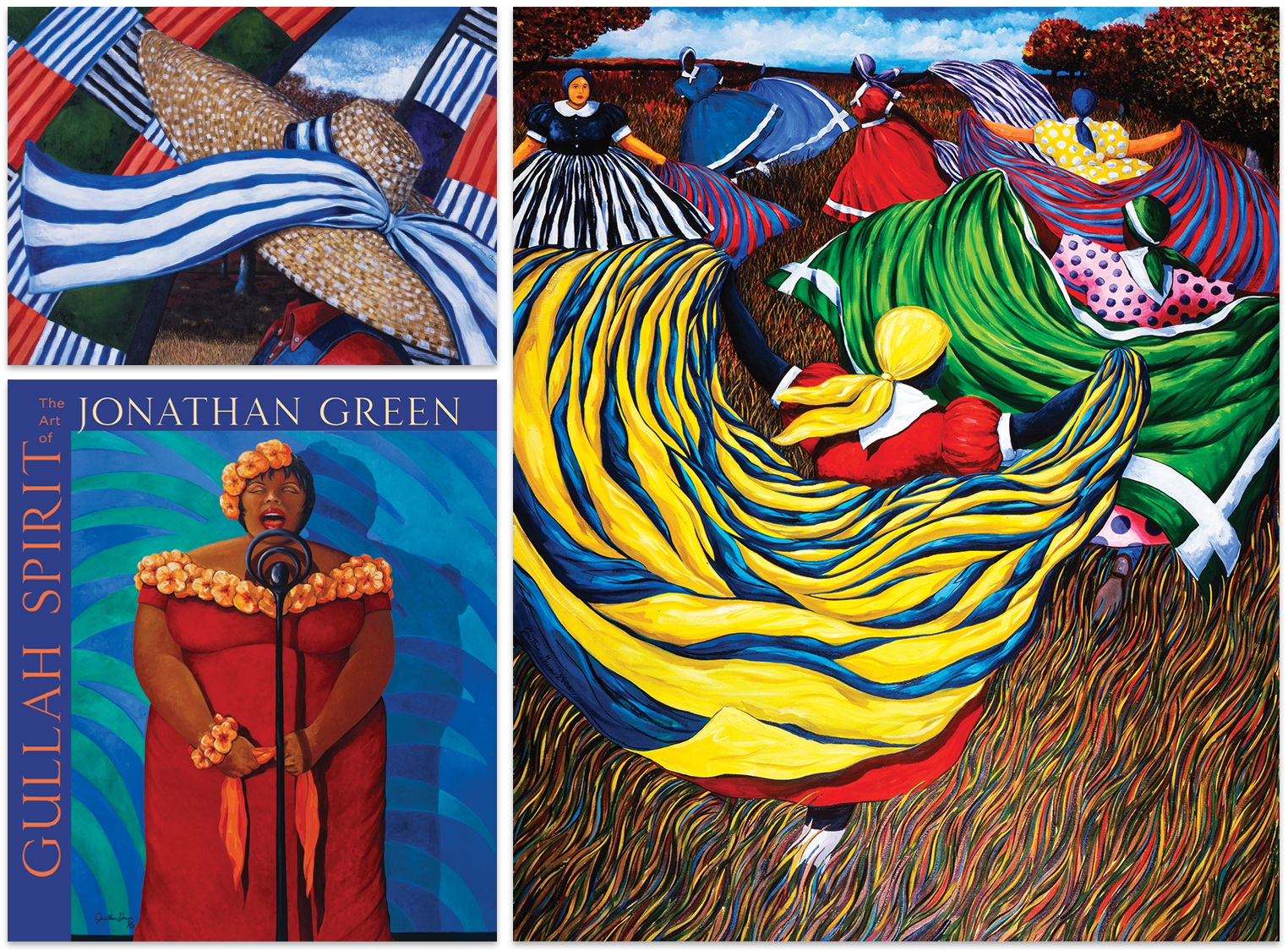See how Green's work has evolved over the past 25 years

Twenty-five years after Gullah Images, artist Jonathan Green releases his Gullah Spirit (USC Press, November 2021).
It’s all here: the billowing laundry and skirts. Scarves dancing in the wind. Hats and more hats—regal, elegant, crowned. There are stripes and dots and diamond shapes amid jubilant primary colors. There are church pews and church ladies; farmers and fields; black crows and sea gulls against royal blue skies. Memories, yes, of a Lowcountry sea island childhood; dreams of ancestors in full sovereignty, as if they landed on these shores as rightful participants in all its promise and wealth; reflections of kin, community, nature, praise, solitude, darkness, light, and beauty. Always beauty. This is the Gullah spirit of artist Jonathan Green, celebrated in a new coffee table book by the same name published in November by the University of South Carolina Press.
As Gibbes Museum of Art executive director Angela Mack notes in her foreword, the book comes 25 years after USC Press published Gullah Images, which can be found on many coffee tables and bookshelves in Charleston. During that quarter of a century, Green has continued to add to his oeuvre at an impressive pace, staying true to his signature language of robust ROYGBIV canvases, while also exploring new territory that Mack says is “less about success and more about finding freedom and having fun.”
The reader observes as the folk-art feel of some of Green’s early work evolves into more abstractness, more complexity, as he plays with pointillism techniques and stippling. A portrait entitled Nina, depicting the musician Nina Simone, feels as weighted and as mesmerizing as the artist herself was; then a few pages later, there’s a young Black girl in red shoes and white bobby socks leaning way back, standing on a swing—an expression of freedom and joy.

(Clockwise from top left) African Memories (oil on canvas, 18 by 24 inches, 2007); Harvest Dance (oil on canvas, 60 by 48 inches, 2000); Gullah Spirit: The Art of Jonathan Green, Published by the University of South Carolina Press.
There is movement in almost every image—marsh grass waving, girls swinging, choirs singing. His world shimmies and sways and carries us with it. We see few eyes—nearly all Green’s characters are facing away or have their eyes obscured by wide brim hats—but we see clearly. Green’s vision is vivid and strong—here is a culture brought to life and a body of work embodied with its spirit.
As the introductory essays by noted historians and curators make clear, Green’s contributions go far beyond these paintings. As an art collector with his partner Richard Weedman, as well as an educator, advocate, and creative collaborator across numerous disciplines, Green is a monumental South Carolinian and national figure. Gullah Spirit, the Art of Jonathan Green celebrates that fact, as well as the artist’s vibrant legacy, and is a necessary companion to Gullah Images or to any coffee table.
Photographs Printed with permission from Gullah Spirit: The Art of Jonathan Green, Published by the University of South Carolina Press, ©2021, University of south carolina, Columbia, USCpress.com